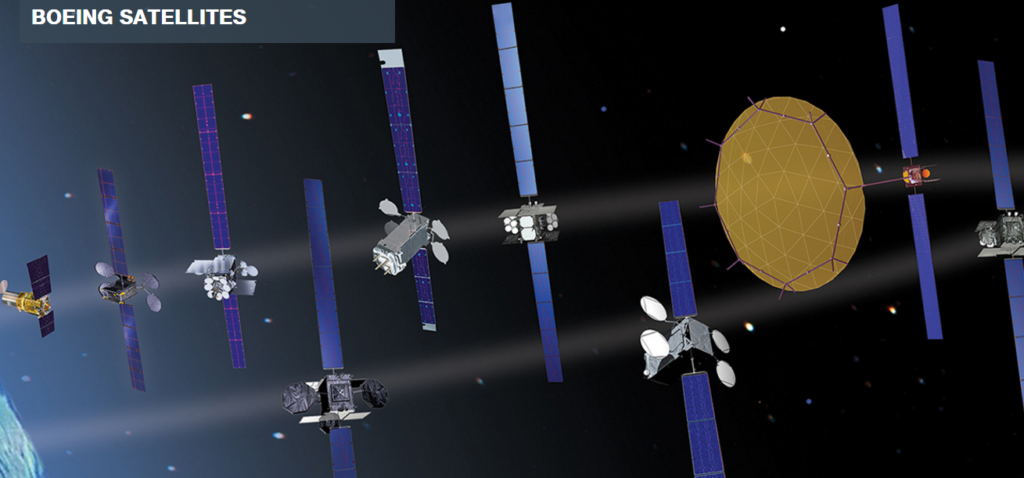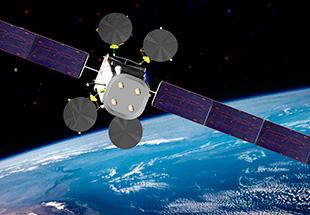 Boeing has been on board with 3D printing for quite some time now. While numerous aerospace companies have been embracing the technology, Boeing is one of the more creative – they’ve filed patent applications for the 3D printing of levitating objects and artificial ice, and recently provided an update on the 600 3D printed parts for their Starliner space taxis. Now the company is turning to 3D printing for the manufacture of satellites.
Boeing has been on board with 3D printing for quite some time now. While numerous aerospace companies have been embracing the technology, Boeing is one of the more creative – they’ve filed patent applications for the 3D printing of levitating objects and artificial ice, and recently provided an update on the 600 3D printed parts for their Starliner space taxis. Now the company is turning to 3D printing for the manufacture of satellites.
Boeing is a competitive producer of giant, expensive satellites, but they won’t stay competitive for long, according to satellite business chief Paul Rusnock, unless they make some big changes to their manufacturing processes. Their current models cost about $150 million each and take a lot of time to build, meaning that the company can create relatively few per year. For a long time, this wasn’t a problem, as satellite manufacturing was such a specialized market that there were few competitors. That’s not the case anymore.
3D printing has allowed for the fabrication of satellites that are smaller, lighter, simpler, and far less expensive, meaning that everyone from small companies to college students can build viable satellites for launch. While student groups aren’t likely to unseat Boeing anytime soon, growing numbers of young, smaller companies like Made In Space and SpaceX are beginning to compete with the larger, long-established players like Boeing for government contracts.
Cost reduction and speed are large parts of what makes 3D printed satellites so appealing, and the companies that make them so increasingly competitive. Compared to the flocks of 3D printed CubeSats being sent out into space, Boeing’s manually assembled satellites seem positively archaic. With SpaceX’s recent announcement that they plan to launch 4,424 Internet satellites into orbit in the next few years, Boeing can’t help but feel uneasy. While smaller companies haven’t yet started claiming, on a widespread level, the kinds of military and government contracts that Boeing has, it’s only a matter of time before Boeing’s clients start looking towards the more efficient, less expensive satellites that these newer companies can provide.
Boeing, as mentioned above, is plenty familiar with the advantages that 3D printing offers – it’s just a matter of adapting the technology to their satellite manufacturing processes. It takes less than two weeks to build an entire 737 aircraft, and the company’s goal is to incorporate that kind of speed into their satellite and spacecraft business. Since they’re typically building large satellites, they’re never going to achieve the kind of speed at which a CubeSat can be fabricated but, according to Rusnock, they can definitely accelerate their production schedules.
Boeing has already begun to implement 3D printing into satellite production at their Los Angeles facility, and is reassessing their designs to see where the number of parts can be reduced, further speeding up production.
“Our roadmaps are really focused on simplifying the overall architecture and design of satellites so they can be assembled more quickly,” Rusnock told the Wall Street Journal. “Making them simpler, easier to put together also reduces production glitches.”
3D printing isn’t the only technology that can make satellite production more efficient for Boeing: simulated testing and satellite-run self-check protocols can also cut back on time and cost. The shift to 3D printed, modular satellite designs is going to mark a large shift overall in Boeing’s satellite business. Modular units only last about half as long as the customized, hand-assembled satellites in which Boeing specializes, but several of the company’s clients have already expressed interest in more frequent launches with regularly upgraded technologies. Discuss in the Boeing forum at 3DPB.com.
Subscribe to Our Email Newsletter
Stay up-to-date on all the latest news from the 3D printing industry and receive information and offers from third party vendors.
You May Also Like
NSF Awards Kentucky $1M for Advanced Manufacturing
The National Science Foundation has awarded a $1 million grant to the University of Louisville for the Advancing Manufacturing and Building Construction Technologies (NSF AMT) project. This initiative is part...
3D Printing News Briefs, May 11, 2024: 3D Printed Stent, Tower, Sculptures, & More
We’re starting off with medical research in today’s 3D Printing News Briefs, as researchers in Korea used CT images and 3D printing to fabricate an educational simulator for a mastoidectomy....
3D Printing Unpeeled: Wind Turbines, Probiotics and Lenses
TPI Composites, ORNL and Ingersoll Rand are working to make wind turbine tooling segments that can be 18.3 meters long. These elements also include resistive wires that help keep the...
Tethon 3D Releases Cost-effective Bioprinter
Tethon 3D, known for its ceramic-loaded DLP materials, custom resins, and DLP 3D printers, has recently released a bioprinter. Vat polymerization printers like DLP systems have been widely used by...



































